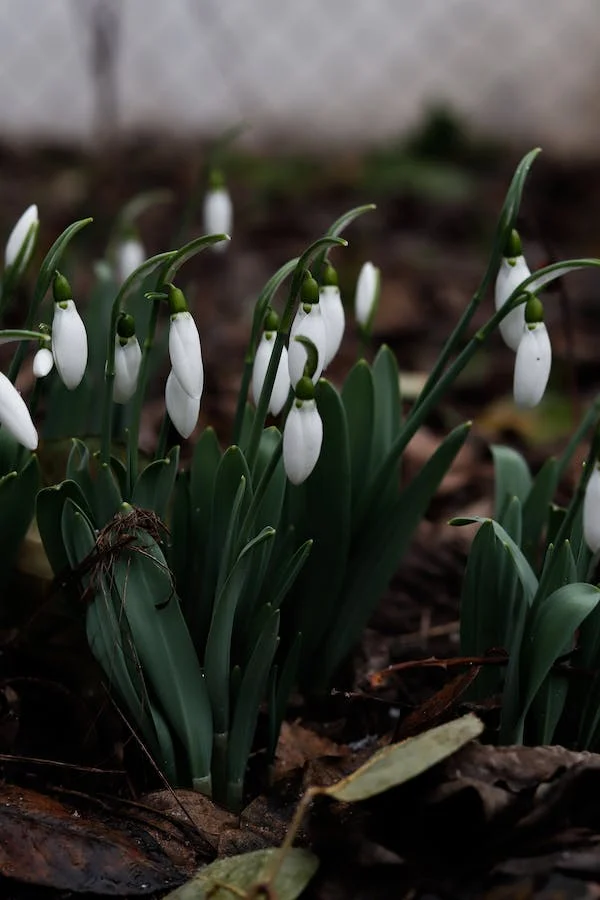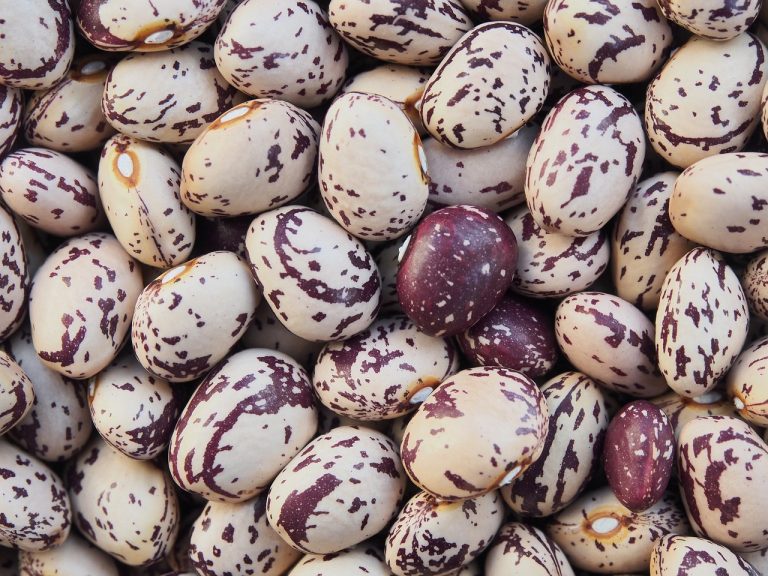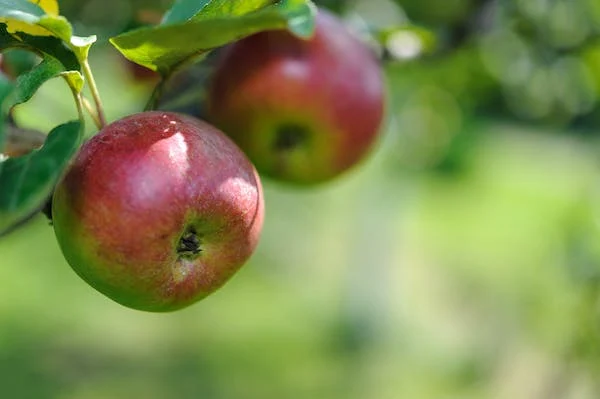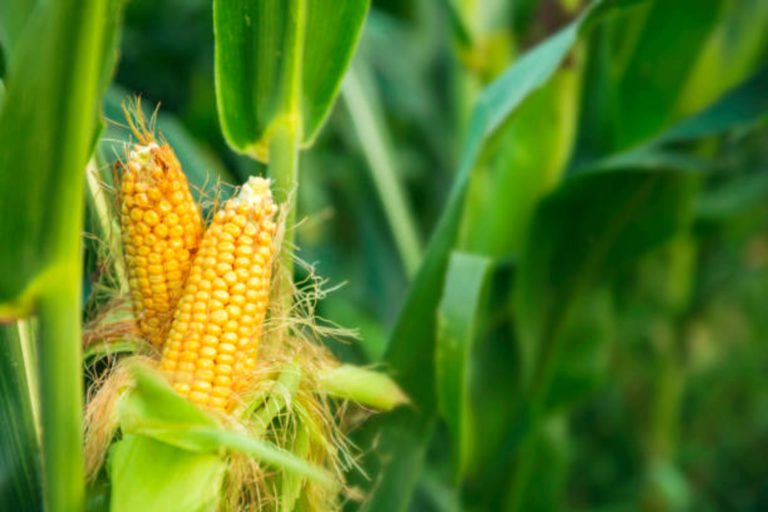Advice For Growing Tomatoes in Growing Bags 3 helpful ways
Imagine stepping onto your porch or balcony, greeted by an explosion of plump, juicy tomatoes thriving in compact growing bags. With the right guidance, this vision can become your reality.
The art of cultivating tomatoes in growing bags offers a unique blend of convenience and productivity, perfect for both novice gardeners with limited space and seasoned growers seeking a new challenge.
Whether you’re yearning for a taste of sun-ripened sweetness or aiming to elevate your culinary creations, these valuable insights will empower you to nurture your tomatoes to their fullest potential. Say goodbye to sprawling garden plots and discover the rewarding realm of growing bags, where tomatoes flourish and your gardening ambitions know no bounds.
Advice For Growing Tomatoes in Growing Bags
To grow tomatoes successfully in growing bags, start by selecting a sunny location with at least 6-8 hours of sunlight. Choose high-quality growing bags with good drainage and sufficient depth for root development.
Opt for a nutrient-rich potting mix and consider adding slow-release fertilizers to provide essential nutrients throughout the growing season. When planting, bury the tomato seedlings deeply to encourage strong root growth.
Maintain consistent watering and be vigilant against common tomato pests. With these expert tips, you’re on your way to enjoying plump, flavorful tomatoes from your growing bags.

Choosing the Right Grow Bag
Overview of different types of grow bags
Choosing the right grow bag is essential to the success of your tomato plants. Grow bags are available in different materials, sizes, shapes, and designs. Here are some factors to consider when selecting the right grow bag for your tomato plants
Factors to consider when selecting a grow bag for tomatoes
Material:
Grow bags can be made of various materials such as fabric, plastic, and paper. Each material has its own benefits and drawbacks. Fabric grow bags are the most popular choice among gardeners because they are breathable, allow air and water to circulate, and prevent soil from drying out quickly.
Plastic grow bags are durable, inexpensive, and retain moisture well, but they do not allow air circulation, and the roots may get too hot. Paper grow bags are biodegradable, but they may not be durable enough to last an entire growing season.
Size:
The size of the grow bag determines the amount of soil and the number of tomato plants you can grow. The size of the grow bag will depend on the available space you have, the number of plants you want to grow, and the variety of tomato plants you plan to grow.
A 5-gallon grow bag can support one tomato plant, while a 10-gallon grow bag can support two plants.
Shape:
Grow bags come in different shapes such as square, round, and rectangular. The shape of the grow bag can affect the root growth and the amount of soil required. Square grow bags are the most popular because they maximize the space and allow for more even root growth.
Design:
Grow bags can come with different features such as handles, drainage holes, and water reservoirs. Handles make it easy to move the grow bag around, while drainage holes allow excess water to drain out of the bag. Water reservoirs are designed to retain water and reduce the frequency of watering.
Recommendations for the best type of grow bag for tomatoes
Recommendations for best type of grow bags for tomatoes. They are breathable, lightweight, and easy to move around. A 5-gallon or 7-gallon fabric grow bag is sufficient for growing one tomato plant, while a 10-gallon grow bag can accommodate two plants.
Square-shaped grow bags with drainage holes and water reservoirs are also recommended for tomato plants.
It is essential to choose a high-quality grow bag that is durable, resistant to tearing, and provides adequate support to your tomato plants. Opting for eco-friendly options such as biodegradable grow bags can also be a sustainable choice.
Preparing the Grow Bag for Planting
Soil selection and preparation
Choosing the right soil is critical for the success of your tomato plants. Use a high-quality potting mix that is well-draining and has adequate nutrient content. Avoid using garden soil or topsoil, which may contain weed seeds, diseases, or pests
Fill the grow bag with the potting mix until it is about two-thirds full. Leave enough space for the roots to grow and for watering.
Fertilization and pH balancing
Fertilization:
Add a slow-release fertilizer to the soil to provide your tomato plants with the necessary nutrients throughout the growing season. Alternatively, you can add organic compost or worm castings to the soil to improve its nutrient content.
pH Balancing:
Check the pH level of the soil using a pH meter or a soil testing kit. Tomato plants prefer a pH level between 6.0 and 7.0. If the pH level is too acidic or alkaline, adjust it by adding lime to raise the pH or sulfur to lower it.
Mix the soil:
Mix the fertilizer and the soil thoroughly using a garden fork or a trowel. Ensure that the fertilizer is evenly distributed throughout the soil.
Water the soil:
Before planting your tomato seedlings, water the soil in the grow bag thoroughly. Allow the water to drain out of the drainage holes before proceeding with planting.
By following these steps, you can ensure that your tomato plants have the necessary nutrients and growing conditions to thrive in the grow bag. It is essential to prepare the grow bag adequately before planting to reduce the risk of transplant shock and improve the chances of your plants’ survival.
Planting Tomatoes in Grow Bags
Once you have prepared the grow bag for planting, it’s time to plant your tomato seedlings. Here are some steps to follow when planting tomatoes in grow bags:
Choosing the right tomato varieties for grow bags
Select a tomato variety that is suitable for container gardening and is well-suited to your growing region. Some of the best tomato varieties for grow bags include determinate or bush varieties, such as Celebrity, Patio, and Roma.
Techniques for planting tomato seedlings in grow bags
Water the tomato seedlings:
Water the tomato seedlings a few hours before planting to ensure that the roots are well-hydrated.
Make a hole in the soil:
Make a hole in the center of the grow bag, deep enough to accommodate the tomato seedling’s root ball.
Place the tomato seedling:
Gently remove the tomato seedling from its pot, being careful not to damage the roots. Place the root ball into the hole and cover it with soil, ensuring that the soil level is the same as the level of the seedling in its original pot.
Firm the soil:
Gently firm the soil around the tomato plant to ensure that it is stable and upright. Avoid compacting the soil too tightly, as this can limit root growth.
Water the plant:
Water the tomato plant immediately after planting to help settle the soil around the roots. Water it again in a few hours or the next day to ensure that the soil is moist but not waterlogged.
Provide support:
Install a tomato cage or stake near the plant to provide support as it grows taller. This will help prevent the plant from falling over or breaking due to wind or rain.
Watering and drainage considerations:
It is essential to monitor the plants’ growth and provide adequate water and nutrients throughout the growing season. Avoid overwatering or underwatering the plants, as this can lead to stunted growth, wilting, or disease. Additionally, regular pruning and removing suckers can help improve the plants’ airflow and reduce the risk of pest and disease infestations.
Caring for Tomato Plants in Grow Bags
Caring for your tomato plants in grow bags is crucial to ensure that they grow healthy and produce a bountiful harvest. Here are some essential care tips to follow:
Watering:
Tomatoes in grow bags need regular watering, especially during hot and dry weather. Water the plants deeply once or twice a week, depending on the weather and the plant’s size. Avoid watering the leaves, as this can increase the risk of fungal diseases. Water the soil at the base of the plant, ensuring that the water reaches the roots.
Fertilization:
Tomatoes in grow bags need regular fertilization to provide them with the necessary nutrients. Use a high-quality tomato fertilizer, and follow the instructions on the label. Alternatively, you can add organic compost or worm castings to the soil to improve its nutrient content.
Pruning:
Regular pruning can help improve the airflow around the plants and reduce the risk of pest and disease infestations. Remove the suckers that grow between the stem and the main branches, and trim the lower leaves that touch the soil.
Support:
Tomatoes in grow bags need support to prevent them from falling over or breaking due to wind or heavy fruit. Install a tomato cage or stake near the plant to provide support as it grows taller.
Pests and diseases:
Keep an eye out for common tomato pests and diseases, such as aphids, whiteflies, blight, and blossom end rot. Use organic pest control methods, such as insecticidal soap or neem oil, to control pest infestations. Remove any diseased plant parts and dispose of them to prevent the spread of disease.
Harvesting:
When the tomatoes ripen, harvest them regularly to encourage the plant to produce more fruit. Pick the tomatoes when they are firm and fully colored, but before they become overripe or start to rot.
By following these care tips, you can ensure that your tomato plants in grow bags grow healthy and produce a bountiful harvest. Regular monitoring and maintenance can help you detect and address any issues before they become severe, and ensure that your plants thrive throughout the growing season.
Troubleshooting Tomato Plant Problems
Common issues tomato plants may experience when grown in grow bags
Tomato plants grown in grow bags may experience several problems that can affect their growth, health, and productivity. Some of the most common issues include:
Overwatering or underwatering:
Overwatering or underwatering can cause stunted growth, wilting, yellowing, and other signs of stress. Ensure that the soil is moist but not waterlogged, and water the plants deeply but infrequently.
Nutrient deficiencies:
Tomatoes in grow bags may experience nutrient deficiencies, especially if the soil is not well-balanced or if the plants do not receive enough fertilization. Signs of nutrient deficiencies include yellowing leaves, stunted growth, and poor fruit set.
Pests and diseases:
Common tomato pests and diseases, such as aphids, whiteflies, blight, and blossom end rot, can affect plants grown in grow bags. These problems can cause wilting, discoloration, fruit rot, and other damage.
Temperature stress:
Tomatoes are sensitive to temperature fluctuations, especially during extreme heat or cold. High temperatures can cause blossom drop, fruit cracking, and sunscald, while low temperatures can cause stunted growth and poor fruit set.
How to identify and solve these problems
To identify and solve tomato plant problems, follow these steps:
- Observe the plants regularly for signs of stress, such as wilting, yellowing, spotting, or fruit rot.
- Check the soil moisture level regularly and adjust your watering schedule as needed. Avoid overwatering or underwatering the plants, as this can cause root rot or other problems.
- Test the soil nutrient content and adjust your fertilization schedule as needed. Use a high-quality tomato fertilizer, and follow the instructions on the label.
- Identify any pests or diseases that may be affecting your plants, and use organic pest control methods to manage the infestation. Remove any diseased plant parts and dispose of them to prevent the spread of disease.
- Provide shade or shelter to protect your plants from extreme temperatures, such as using shade cloth or row covers during hot weather.
By identifying and addressing tomato plant problems promptly, you can help your plants recover and thrive in grow bags. Regular monitoring and maintenance can help you detect and address any issues before they become severe, and ensure that your plants produce a bountiful harvest.
Harvesting and Storing Tomatoes Grown in Grow Bags
When to harvest tomatoes in grow bags
Tomatoes grown in grow bags typically take between 60 and 90 days to mature, depending on the variety and growing conditions. When the tomatoes are ripe, they should be firm, plump, and brightly colored. To check if your tomatoes are ripe, gently squeeze the fruit, and it should yield slightly to the touch.
It’s best to harvest tomatoes in the morning when they are cool and fully hydrated. This will help to preserve their flavor and texture. Avoid harvesting tomatoes during the hottest part of the day, as the heat can cause them to become overripe and mushy.
Tips for storing harvested tomatoes
To store harvested tomatoes, follow these tips:
- Handle the tomatoes gently to avoid bruising or damaging the fruit.
- Remove any damaged or overripe tomatoes, as they can spoil the rest of the batch.
- Store the tomatoes in a cool, dry place, away from direct sunlight.
- Do not refrigerate tomatoes, as this can cause them to lose their flavor and texture.
- If you have harvested a large amount of tomatoes, consider canning, freezing, or drying them for later use.
- When you’re ready to use the tomatoes, rinse them under cool water and remove any stems or leaves.
By following these tips, you can ensure that your harvested tomatoes stay fresh and flavorful for as long as possible. Tomatoes grown in grow bags can produce a bountiful harvest, and with proper care and attention, you can enjoy the fruits of your labor for months to come.
Pest and Disease Control
Common pests and diseases that affect tomato plants in grow bags
Tomato plants grown in grow bags are susceptible to a range of pests and diseases that can affect their growth, health, and productivity. Some of the most common pests and diseases that can affect tomato plants in grow bags include:
- Aphids: These small, soft-bodied insects can suck the sap from tomato plants, causing wilting, yellowing, and stunted growth.
- Whiteflies: These tiny, winged insects can also suck the sap from tomato plants, causing yellowing, wilting, and sticky honeydew.
- Spider mites: These small arachnids can cause stippling, webbing, and yellowing of the leaves, and they can spread quickly in dry or dusty conditions.
- Blight: This fungal disease can cause wilting, yellowing, and spotting of the leaves, stems, and fruit, and it can spread rapidly in humid or wet conditions.
- Blossom end rot: This physiological disorder can cause brown or black lesions on the bottom of the fruit, caused by calcium deficiency or irregular watering.
Preventative measures to minimize the risk of pests and diseases
To minimize the risk of pests and diseases, follow these preventative measures:
- Choose disease-resistant tomato varieties that are well-suited for your growing conditions.
- Use clean grow bags, soil, and tools to avoid introducing pests or diseases to your plants.
- Water the plants deeply but infrequently to avoid water stress or fungal growth.
- Provide good air circulation and ventilation to prevent humid or stagnant conditions that can encourage fungal growth.
- Keep the growing area clean and free of debris, weeds, or fallen leaves that can harbor pests or diseases.
Organic and chemical solutions for pest and disease control in grow bags
If you notice signs of pests or diseases on your tomato plants, there are several organic and chemical solutions you can use to control the infestation:
- Handpick or blast off aphids or whiteflies with a strong stream of water.
- Apply insecticidal soap or neem oil to control aphids, whiteflies, or spider mites.
- Apply a copper fungicide or sulfur spray to control blight or other fungal diseases.
- Use a calcium supplement or adjust your watering schedule to prevent blossom end rot.
- Rotate your tomato plants with other crops every season to prevent the buildup of pests or diseases in the soil.
By following these pest and disease control measures, you can help your tomato plants stay healthy and productive in grow bags. Remember to monitor your plants regularly for signs of stress or infestation, and take action promptly to prevent the spread of pests or diseases.
Temperature and Sunlight Considerations
Optimal temperature and sunlight requirements for tomato plants in grow bags
Tomato plants require specific temperature and sunlight conditions to thrive and produce a bountiful harvest. In general, tomato plants need at least six hours of direct sunlight each day, and they prefer temperatures between 60-80°F (15-27°C).
However, different tomato varieties may have slightly different requirements, so it’s important to choose a variety that is well-suited for your climate and growing conditions.
How to protect tomato plants in grow bags from extreme temperatures and excessive sunlight
Tomato plants in grow bags are more susceptible to extreme temperatures and excessive sunlight because the bags can dry out quickly and heat up faster than soil. To protect your tomato plants from these conditions, follow these tips:
- Provide shade during the hottest part of the day to prevent scorching and sunburn. You can use shade cloth or plant tall companion plants to provide some relief.
- Water the plants frequently and deeply to prevent wilting and heat stress. Consider using a self-watering system or watering spikes to ensure consistent moisture.
- Insulate the grow bags with mulch or straw to keep the soil cool and retain moisture. You can also wrap the bags with reflective materials to prevent overheating.
- Cover the plants with row covers or frost blankets during cold snaps or frost warnings to prevent frost damage.
Solutions for providing the right temperature and sunlight conditions for tomato plants in grow bags
To provide the right temperature and sunlight conditions for your tomato plants in grow bags, consider these solutions:
- Choose a sunny location that receives at least six hours of direct sunlight each day.
- Consider using a trellis or stake to keep the plants upright and maximize sunlight exposure.
- Use a thermometer to monitor the temperature in the grow bags and adjust as needed.
- Use a grow light or supplemental lighting system to provide additional light during the winter months or in areas with limited sunlight.
By providing the right temperature and sunlight conditions for your tomato plants in grow bags, you can help them grow strong, healthy, and productive. Remember to monitor your plants regularly for signs of stress or sunburn, and take action promptly to prevent damage or loss.
Sustainability and Eco-Friendliness
Environmental benefits of growing tomatoes in grow bags
Growing tomatoes in grow bags can provide several environmental benefits, such as:
Reduced water usage:
Grow bags are designed to retain water, which can reduce the amount of water needed for irrigation compared to traditional gardening methods.
Decreased use of synthetic fertilizers:
Grow bags can be filled with organic soil and compost, which can provide the necessary nutrients for healthy plant growth without the need for synthetic fertilizers.
Less waste:
Grow bags can be reused multiple times, reducing the amount of waste produced by gardening.
Reduced carbon footprint:
Growing your own food reduces the carbon footprint associated with transportation and packaging of store-bought produce.
(FAQ’S) About Advice For Growing Tomatoes in Growing Bags
Q1: What are growing bags, and why should I consider using them for growing tomatoes?
Growing bags are a type of container designed for cultivating plants. They offer benefits like better drainage, mobility, and space utilization. Using them for tomatoes can lead to healthier plants and more efficient growth.
Q2: How do I choose the right location for my growing bags?
Opt for a sunny spot with 6-8 hours of sunlight daily. This ensures your tomato plants receive the energy they need for optimal growth and fruit production.
Q3: What type of growing bags should I use?
Select high-quality, UV-resistant growing bags with proper drainage holes. Bags with handles make transportation easier, and larger sizes provide ample room for root expansion.
Q4: What kind of soil should I use in the growing bags?
Choose a well-draining, nutrient-rich potting mix. This encourages healthy root development and provides essential nutrients for your tomato plants.
Q5: How often should I water my tomato plants in growing bags?
Keep the soil consistently moist but not waterlogged. Depending on the weather, you might need to water every 2-3 days. Adjust the frequency based on the moisture level of the soil.
Q6: Can I use fertilizers with growing bags?
Yes, you can. Consider incorporating slow-release fertilizers into the potting mix before planting. These provide a steady supply of nutrients throughout the growing season.
Q7: How deep should I plant the tomato seedlings?
Bury the tomato seedlings deeply, leaving only a few top leaves above the soil. This encourages the plants to develop a strong root system, leading to better nutrient uptake.
Q8: What about pests and diseases?
Be vigilant against common tomato pests like aphids, caterpillars, and whiteflies. Regularly inspect your plants and take appropriate measures, such as using natural repellents or introducing beneficial insects.
Q9: Can I grow different tomato varieties in the same growing bag?
It’s best to stick to one variety per growing bag. Different varieties have different growth patterns and may require varying levels of care and nutrients.
Q10: Are there any additional tips for maximizing tomato yield in growing bags?
Prune your tomato plants to encourage airflow and remove suckers that divert energy from fruit production. Adding support like cages or stakes can prevent the plants from toppling under the weight of the tomatoes.
Tomatoes are typically ready to harvest when they are fully ripe and have a uniform color. To harvest tomatoes from grow bags, gently pull the tomato from the vine using your fingers or pruning shears.
Conclusion
In conclusion, growing tomatoes in grow bags is an excellent way to cultivate fresh, delicious, and healthy produce in a limited space. By following the tips and techniques outlined in this article, you can ensure that your tomato plants thrive and yield a bountiful harvest.
From selecting the right grow bag to providing optimal care and addressing potential issues, you now have the knowledge and tools to grow juicy and flavorful tomatoes in an eco-friendly and sustainable manner.
Whether you’re a seasoned gardener or a beginner, growing tomatoes in grow bags can be a fulfilling and rewarding experience that provides you with fresh, home-grown produce all season long.





